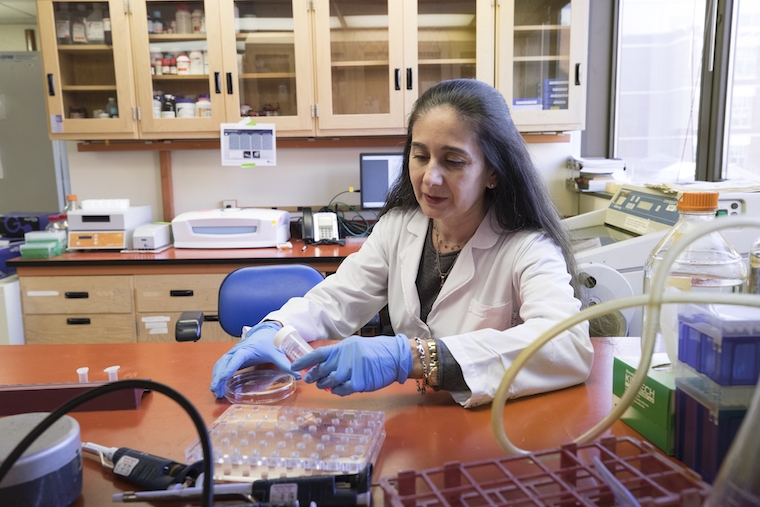
Kidney researcher Maria Luisa S. Sequeira-Lopez, MD, is part of the Department of Pediatrics and UVA’s Child Health Research Center.
University of Virginia School of Medicine researchers have determined the location of natural blood-pressure barometers inside our bodies that have eluded scientists for more than 60 years.
These cellular sensors detect subtle changes in blood pressure and adjust hormone levels to keep it in check. Scientists have long suspected that these barometers, or “baroreceptors,” existed in specialized kidney cells called renin cells, but no one has been able to locate the baroreceptors until now.
The new findings, from UVA Health’s Maria Luisa S. Sequeira-Lopez and colleagues, finally reveal where the barometers are located, how they work and how they help prevent high blood pressure (hypertension) or low blood pressure (hypotension). The researchers hope the insights will lead to new treatments for high blood pressure.
“It was exhilarating to find that the elusive pressure-sensing mechanism, the baroreceptor, was intrinsic to the renin cell, which has the ability to sense and react, both within the same cell,” said Sequeira-Lopez, of UVA’s Department of Pediatrics and UVA’s Child Health Research Center. “So the renin cells are sensors and responders.”
Sensing Blood Pressure
The existence of a pressure sensor inside renin cells was first proposed back in 1957. It made sense: The cells had to know when to release renin, a hormone that helps regulate blood pressure. But even though scientists suspected this cellular barometer had to exist, they couldn’t tell what it was and whether it was located in renin cells or surrounding cells.
Sequeira-Lopez and her team took new approaches to solving this decades-old mystery. Using a combination of innovative lab models, they determined that the baroreceptor was a “mechanotransducer” inside renin cells. This mechanotransducer detects pressure changes outside the cell, then transmits these mechanical signals to the cell nucleus, like how the cochlea in our ear turns sound vibrations into nerve impulses our brain can understand.
The researchers have unlocked exactly how the baroreceptors work. They found that applying pressure to renin cells in lab dishes triggered changes within the cells and decreased activity of the renin gene, Ren1. The scientists also compared differences in gene activity in kidneys exposed to lower pressure and those exposed to higher pressure.
Ultimately, when the baroreceptors detect too much pressure outside the renin cell, production of renin is restricted, while blood pressure that is too low prompts the production of more renin. This marvelous mechanism is vital to the body’s ability to maintain the correct blood pressure. And now, after more than 60 years, we finally understand how and why.
“I feel really excited about this discovery, a real tour de force several years in the making. We had a great collaboration with Dr. [Douglas] DeSimone from the Department of Cell Biology,” Sequeira-Lopez said. “I am also excited with the work to come, to unravel the signaling and controlling mechanisms of this mechanotransducer and how we can use the information to develop therapies for hypertension.”
Findings Published
The scientists have published their findings in the scientific journal Circulation Research. The research team consisted of Hirofumi Watanabe, Brian C. Belyea, Robert L. Paxton, Minghong Li, Bette J. Dzamba, DeSimone, R. Ariel Gomez and Sequeira-Lopez.
The work was supported by the National Institutes of Health, grants P50 DK 096373, R01 DK 116718, R01 DK 116196, R01 DK 096373, R01 HL 148044 and R35 GM 131865, and the Japan Society for the Promotion of Science Overseas Research Fellowships.
To keep up with the latest medical research news from UVA, subscribe to the Making of Medicine blog.



